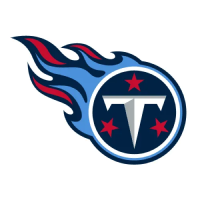Week 1 in the NFL was highlighted by many impressive performances of rookie and second-year quarterbacks. From Justin Hebert to Mac Jones, young quarterbacks displayed command of their respective offenses throughout the league. Of all the first and second-year quarterbacks, the most impressive performance was by the Philadelphia Eagles’ Jalen Hurts.
Coming into the year, Hurts was penciled in as the starting quarterback, but this seemed to be on a week-by-week basis with the Eagles trading for former Jacksonville Jaguars starting quarterback Gardner Minshew during training camp. For Eagles fans, this was a sign that general manager Howie Roseman had questions about Hurts’ ability to be a consistently high-caliber quarterback in the NFL.
Coming into the NFL, Hurts was known as a dual-threat quarterback that was effective at utilizing his legs in RPO action with a strong arm to push the ball vertically down the field. But many NFL general managers had questions about his ability to become a quarterback who could consistently stand and win in the pocket and display the accuracy and anticipation to run many NFL pro-style offenses. During his rookie year, Hurts posted a stat line of six touchdowns, four interceptions, and a 52% completion percentage, all numbers that leave much to be desired and seemingly proving that many NFL teams were right about Hurts’ ability to play quarterback in the NFL.
During the offseason, the Eagles made a change at head coach. They moved on from Super Bowl-winner Doug Pederson and hired Nick Sirianni to replace him. Prior to Sirianni being hired, he was the offensive coordinator for the Indianapolis Colts, where his offenses were known for quarterback efficiency.
For Eagles fans, the combination of a first-year head coach and a second-year quarterback left many questions on what the Eagles’ identity would be offensively. After a Week 1 win against the Atlanta Falcons, I think those questions were answered. Hurts posted a stat line of three touchdowns, 0 interceptions, 274 yards passing, and a completion percentage of 77%—a model of efficiency and effectiveness. While the numbers are impressive, I believe how they were constructed is the most impressive thing.
Sirianni did a masterful job of constructing an offense that highlighted Hurts’ strengths. From the opening quarter, Hurts looked to be confident and decisive within Sirianni’s offense, mostly because he was asked to do things that played to his strengths. The Eagles’ Week 1 offense featured a run game that involved quarterback options, quarterback powers, and when he was asked to throw the ball, it was on vertical routes that helped declare coverage for Hurts.
Dating back to his college career with Alabama and Oklahoma, Hurts was always known as a dual-threat, winning quarterback. But due to Sirianni’s ability to put Hurts in advantageous situations, we saw an efficient and quite frankly dominant performance from Hurts.
Overall, Eagles fans should be excited about this quarterback-coach combination moving forward. From Cam Newton with the Carolina Panthers to Lamar Jackson with the Baltimore Ravens, we have seen successful versions of this style of offense. So far, after one week of action, it seems to me that the Eagles have solidified the head coach and quarterback relationship that is so vital for an NFL organization to be successful.
Filed In
Related Articles
NFL Draft
Arik Gilbert Doesn’t Need Big Workload To Be A Top NFL Draft Pick
- Aug 22, 2022
NFL Draft
2023 NFL Mock Draft: Marino 1.0
- Aug 22, 2022
Written By


































